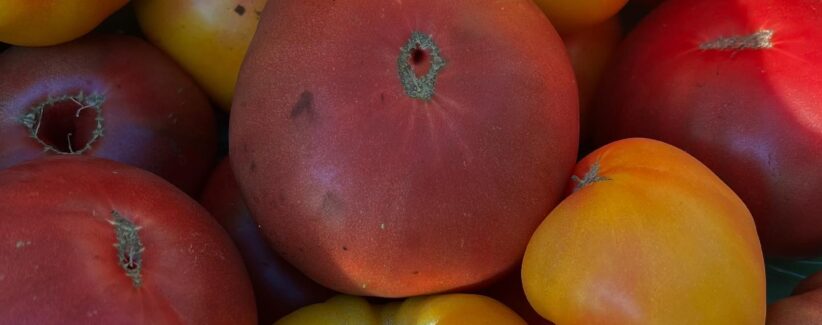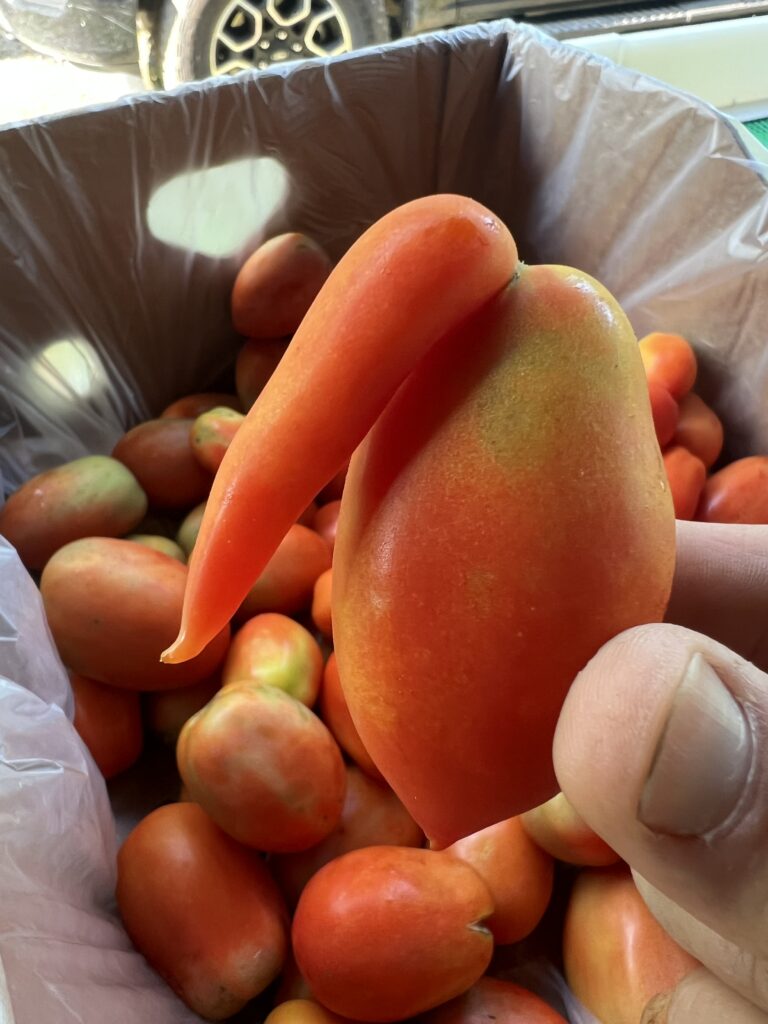Making the Most of Every Harvest: Gaining Ground’s Seconds Program

At Gaining Ground, we believe that nearly every bite that leaves the field should nourish someone. While we commit to growing and distributing “firsts” that meet the highest quality standards, we also recognize the value in produce that falls just short of cosmetic perfection, but remains entirely edible and nourishing. That’s where our seconds program steps in.
“Seconds are crops that have been affected in a minimal fashion,”explains Mark Congdon, Director of Agriculture and Volunteer Experience. “They might have a crack, blemish, or healed nibbling from a pest. It’s still excellent, nourishing food—just not cosmetically perfect. As long as it’s properly labeled and distributed with dignity and respect, seconds are a valuable way to reduce waste and get more food to those who need it.”

The scale of cosmetic waste
The issue of food waste tied to appearance isn’t small. In the U.S., over half of all fruit and vegetables grown are wasted—many at the production or farm level—because they don’t meet rigid cosmetic requirements. Minor blemishes, odd shapes, or color variations often trigger rejection long before produce reaches grocery shelves. This waste has a real environmental cost: up to 8–10% of global greenhouse gas emissions come from food that is grown but never eaten.
These statistics help explain why seconds are so important not just to Gaining Ground, but to the broader fight against food waste.
What qualifies as a “second”
At Gaining Ground, seconds occur only for certain crops and under specific conditions. Acceptable seconds include items like tomatoes with a healed split, large zucchini or summer squash, melons with a small crack (less than 2 inches), carrots or beets with healed vole damage, and winter squash with minor imperfections. What’s unacceptable includes rot, mold, excessive pest damage, or anything leaking.
Partner engagement and dignity
Our Operations Director, Allison, surveyed partner organizations, and almost all say they are willing to accept seconds. Many of these partners prepare meals and appreciate seconds like large zucchinis or blemished apples, which are still perfectly usable. Organizations such as House of Hope, Open Table, UTEC, Sudbury Food Pantry, and Women’s Lunch Place are among those who regularly receive seconds.
But beyond logistics, the seconds program underscores a deeper value.
“It’s not just about reducing waste,” says Mark. “It’s about showing that a tomato with a healed split or a carrot with blemish is still delicious and nourishing.”
Toward better systems
To make this work well, Gaining Ground is developing tools and practices: updated cheat sheets at the wash station, clear labeling, and ongoing discussions with partners about what types of seconds they can accept. These small, thoughtful steps help ensure that seconds are used well, not wasted or rejected, and support dignity, efficiency, and sustainability in our distribution system.